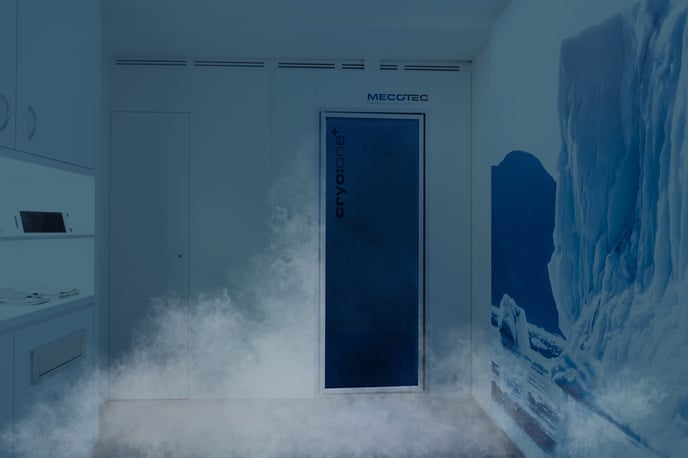What is the definition and fundamentals of whole-body cryotherapy?
DEFINITION
Whole Body Cryotherapy is also known as WBC, which is a form of treatment that uses extremely cold conditions to trigger a physiological response from the body.
Whole Body Cryotherapy (WBC) involves standing in a cryo chamber for a few minutes.
Mechanism of Action WBC is all about a change in tissue temperature caused by the
exposure to the cold air which produces a thermal shock.
This sensory shock leads to an activation of the autonomic, or unconscious, nervous system. This is characterised by rising norepinephrine levels, increased blood pressure, and heart rate
variability.
When the body is exposed to extreme cooling, the blood vessels are constricted and reduce blood flow to the areas of inflammation.
Post cryo, the vessels expand, and an increased presence of antiinflammatory proteins are found in the blood.
Cryotherapy can help reduce inflammation, decrease stress, improve sleep, enhance immune function & speed up recovery. These are some of the many benefits for application to the fitness, health & wellness markets.
FUNDAMENTALS
Approximately 25 years have passed since the first use of WBC by T. YAMAUCHI for the treatment of rheumatoid arthritis.
During this time, this treatment has become broadly in use, especially in Europe where the application areas for WBC have expanded significantly.
By now, WBC has been successfully applied in acute clinical, rehabilitation, ambulatory, and spa treatment settings as well as being used for athletes.
The scientific foundations for WBC have been further expanded, especially during the past 10 years, based on the results of physiological studies of the short‐term effects of cold on the human body.
The departure point for the therapeutic and performance‐enhancing effects of WBC is the extreme short‐term stimulation of cold upon unprotected body surfaces.
Varying in accordance with intra and inter-individual differences, the body surface temperature falls to about +5° C during the course of exposure as a result of transient vasoconstriction and the simultaneous increase in heat loss through convection (cold environmental air) and infrared radiation.
Unlike local cold applications, this results in systemic neurological reflex reactions that are explainable in terms of proven neural, thermal, muscle, and circulatory system principles.
The following factors have been proposed:
- Desensitization/deactivation of nociceptors
- Blockade of the C‐fiber system through the dominance of excitation conduction in Aδ fibers
- Centrally regulated interactions between thermoception, nociception, and neuronal and
Neuroendocrine processes that protect against inflammation - Stimulation of α‐motor neuron activity and attenuation of γ‐motor neuron activity on the
basis of their general, reciprocal response pattern to cold stimuli - Transient increases in circulation in the muscles and improvement of muscle metabolism
- Economization effects on the cardiovascular system and in energy balance during endurance
sports activities - Regulative effects at the level of the central nervous system depending on whether there is a sympathetic‐toned or parasympathetic‐toned baseline state (probably through arousal
circuits from cold stimuli in the spinal vegetative reflex arcs and in the reticular formation)
with resultant improvements in cortical functions, such as the capacity for association and
coordination.

See link to our articles for more on whole-body cryotherapy and the benefits.
GET IN TOUCH NOW FOR MORE INFORMATION:
